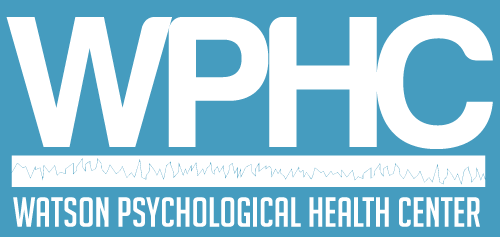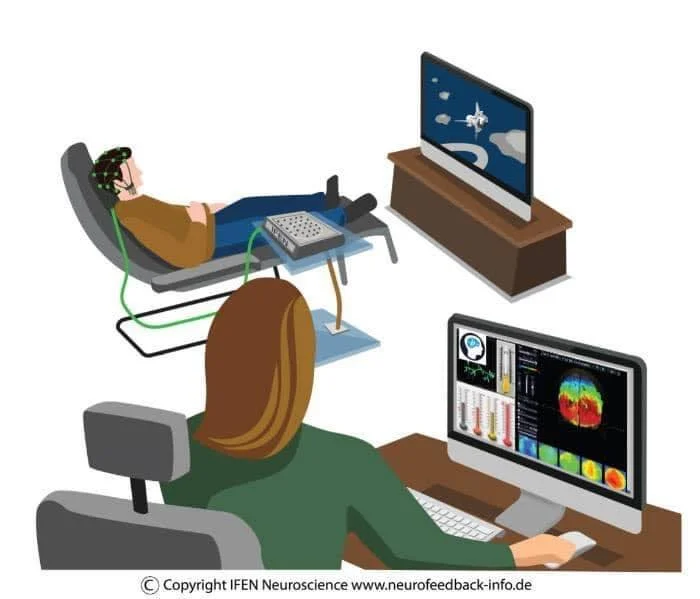Biofeedback / Neurofeedback
Biofeedback and Neurofeedback are tools that empower individuals to reach their potential by enabling them to learn skills to support self-regulation and in turn reduce stress levels.
Neurofeedback
Example of a Neurofeedback Report for the Client.
Measurable Changes Before and After Neurofeedback.
Neurofeedback is exercise for your brain! It’s like taking your brain to the gym. Neurofeedback, also known as EEG biofeedback, is a form of therapy that uses real-time displays of brain activity to teach individuals to self-regulate their brain function. The process begins with the placement of electrodes on the scalp to measure brain waves. This information is then displayed on a computer screen in real-time, allowing the individual to see their brain activity and learn to control it. The therapist will guide the individual through various exercises and strategies to help them achieve their desired brain state, such as reducing anxiety or improving focus. .
Why are people turning to neurofeedback? Studies have shown that neuropsychiatric conditions (i.e. depression, anxiety, bipolar disorder, schizophrenia, PTSD, ADHD, autism, Alzheimer’s) can be caused by inflammation and nutritional deficiencies. There is also data that shows childhood stress/trauma is associated with overt inflammation prior to the development of neuropsychiatric disorders. Pub Med Study on Inflammation and Neuropsychiatric Correlation
Neurofeedback begins with a brain map of the electrical connectivity of the brain that can detect abnormal electrical patterns in the brain (i.e. inflammation). After the map is complete, individualized training sessions are created that exercises your brain which increases blood flow. This increased blood flow reduces inflammation and can allow the brain to heal. The training sessions have the trainee watch videos or play games based on their brain performance.
Brain mapping and neurofeedback can also be implemented to improve brain function in people with no pathology. If you’re wanting to improve academic, occupational, or athletic performance, brain mapping and neurofeedback can help.
What results have been seen with neurofeedback? The brain can shift states very quickly. As an example, in training courses we’ve observed, by the end of several days of training, 80+% of attendees have noticed clear, significant changes in state. Changes influence sleep, mood, alertness, or attention. For some clients, changes – often quite unexpected changes – occur in minutes. It could be chronic depression that’s no longer chronic. Or perhaps a very out-of-control child who is more calm and begins making better grades. But what’s especially compelling about neurofeedback successes is that the changes tend to sustain over time.
How long does the process take? The duration of a neurofeedback brain mapping session can vary depending on the specific protocol being used and the goals of the therapy. Generally, a typical session can take between 30 and 60 minutes. A full course of neurofeedback treatment typically involves 20-40 sessions, usually done once or twice a week, so the total duration of the treatment can range from several weeks to several months. However, the exact number of sessions required can vary depending on the individual's specific needs and response to the treatment.
NOTE: Ten or more training sessions, depending on the severity of the client’s condition, are needed before any short-term transitory changes can be expected to hold. But we work to achieve the result as quickly and efficiently as possible.
To learn more about WPHC’s neurofeedback program contact our office. You can also learn more at isnr.net.
Biofeedback
After a biofeedback session the HRV is rhythmic and balanced, thus creating a relaxed and focused state of being. Coherence is at 100%.
Biofeedback has become a generalized term for different types of therapies. But put simply biofeedback is a tool. A tool that allows a client to see their physiology in real time. This is referred to as traditional biofeedback which refers to the electromyography (EMG) of the body. How can this help you? Biofeedback brings awareness and insight into many of the body sensations, teaching you to have greater control of your somatic symptoms.
Heart Rate Variability (HRV) training is another form of biofeedback. HRV training is the pattern of your heart’s biorhythms. HRV sets out to link the biorhythms of the heart and the brain. When your heart and brain rhythms are in sync, balanced, and harmonious you feel great. When your heart rhythms are erratic you feel stress and frustration. Learning to change your heart rhythms is a practice you can learn to improve the quality of your health, heart, and life. New research supports that HRV helps to boost your immune system.
Testimonials
“I want to express my heartfelt gratitude and joy after witnessing the incredible transformation in my child following a series of neurofeedback treatments. As a mother, I can't begin to describe the relief and happiness I feel knowing that my child has been given a chance for a brighter future, thanks to the dedicated professionals at WPHC.”.
Allison, Texas
“When we first embarked on this journey, I was filled with uncertainty and worry about my child's emotional and cognitive struggles. It was a difficult road for us all, we had tried various therapies and interventions with limited success. We had done some testing, but were not sure on the exact diagnosis that fit our child. I was looking for answers and something that would help. The name calling and poor academic performance was really weighing down on our child. That's when we discovered neurofeedback, Ryan explained how things worked and what we could expect in a way that we could understand. I am so glad that we found out about neurofeedback. Neurofeedback turned out to be a game-changer for our family.”.
Micheal, Texas
“From the very first session, Ryan displayed immense expertise and compassion. They took the time to explain the process to my child in a way that made them feel comfortable and at ease. The welcoming atmosphere of the clinic was a huge relief for both of us, and it set a positive tone for the entire treatment journey.
Over the course of the neurofeedback sessions, I watched in amazement as my child's progress became evident. It was as if a veil had been lifted, and my child was finally able to connect with their true potential. Their emotional regulation improved significantly, and their anxiety began to reside. Schoolwork, which had been a source of great frustration, became more manageable as they developed better focus and attention.
The changes weren't just limited to my child's behavior and emotions; their self-esteem and confidence soared. It was heartwarming to witness my child's growing sense of self-worth, and the smiles on their face became more frequent and genuine.”.
Dawn, Texas
Here is also a quick Video Testimonial,
Reconnect Intensive Testimonial Video.





